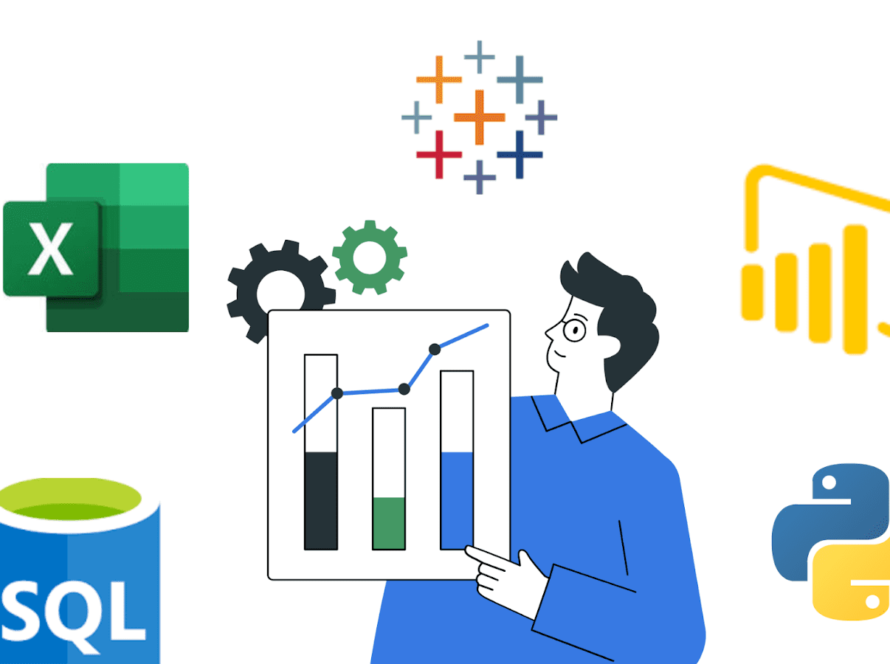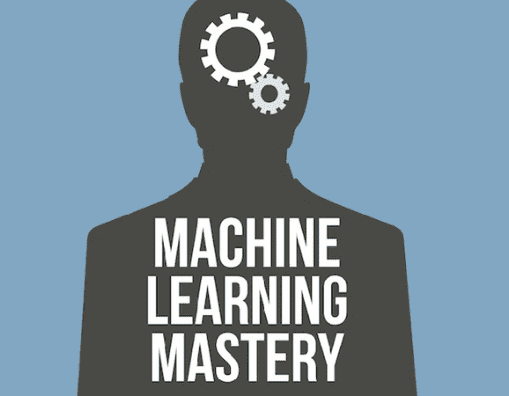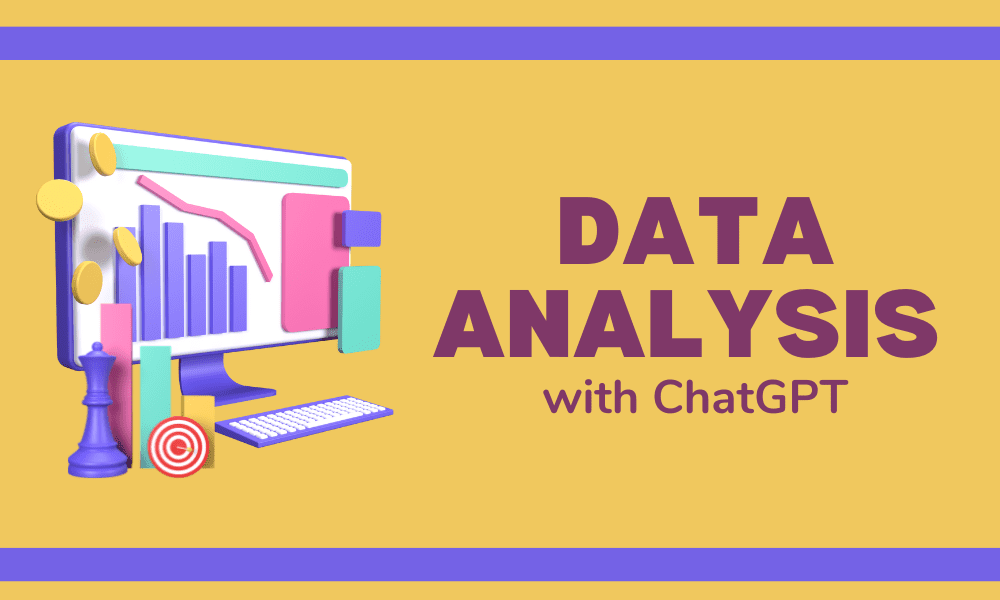
Image by Editor
With data becoming the most valuable business asset, data analysis plays a crucial role in organizational decision-making. Companies need to inspect, transform thoroughly, and model data to discover helpful information and aid decision-making.
As organizations have to deal with increasing volumes of data, analyzing them has become a challenging task. In such a scenario, ChatGPT’s ability to be a part of the data analysis process is a valuable asset.
ChatGPT can comprehend and generate human-like text to assist you with querying datasets, generating code snippets, and interpreting results. So, when organizations integrate this advanced language model into the data analysis process, it streamlines the workflows and enhances its efficiency.
This article explores the process, challenges, and case studies associated with seamlessly incorporating ChatGPT into the data analysis workflow. Let’s get started with the definition and functionality of ChatGPT in brief.
ChatGPT has become a household name in the tech world and beyond in the last 1 year. It is a language model developed based on the GPT-3.5 architecture by OpenAI. Here, GPT stands for “Generative Pre-trained Transformer”. Basically, this is an artificial intelligence model that can understand input provided by humans and generate human-like text in response to that.
ChatGPT can perform an array of tasks. Some of these are:
- Understand the natural language used by humans
- Understand the context of a discussion
- Generate coherent yet diverse responses to various prompts
- Translate from one language to another
- Answer questions based on its training knowledge resources
- Generating code snippets and explanations
- Writing stories and poems based on prompts
People from almost all professions can utilize these features of ChatGPT to make their personal and professional lives easy.
Real-Time Decision-Making
In any business context that needs instant decision-making, efficient data analysis is a must. It allows organizations to quickly extract meaningful data insights, ensuring timely and informed decision-making.
Resource Optimization
All the business resources are precious, including manpower and time. Efficient data analysis can streamline the analysis process so that your valuable resources are used wisely.
Stay Ahead of the Competitors
By analyzing data, companies can get actionable insights that help them stay ahead of the competition.
Enhanced Productivity
If the data analysis process becomes efficient, it reduces the time and effort needed for analysts to generate insights. This not only enhances their productivity but also allows them to focus on more complex and strategic tasks.
Improved Accuracy
Efficient data analysis methodologies are useful for data validation and quality checks. As a result, you get accurate results, reducing the chances of error that might arise from an inefficient analysis process.
Advanced Data Analysis
This is an exclusive feature of ChatGP-4. This allows users to directly upload data to the platform for writing and testing code. If you do not have access to it, here is how you can get the paid ChatGPT plan for free.
Solving Problems
If you ever encounter roadblocks in your data analysis process, ChatGPT can suggest troubleshooting solutions for problems related to data, algorithms, or analytical approaches.
Understanding Natural Language
Since ChatGPT can understand natural language text, users can interact with this model using plain language. In fact, it is one of the most requested ChatGPT features.
Explaining Concept
ChatGPT can explain data analysis concepts, statistical methods, and ML techniques in a language that is easy to understand. Users looking to learn the fundamentals of data analysis can leverage it.
Brainstorming Ideas
Even for brainstorming sessions for data analysis strategies, ChatGPT can assist with hypotheses, experimental designs, or ways to approach complex data problems.
Assisting with Tools
ChatGPT can also guide you in using different data analysis tools or platforms. It is a useful resource for explaining the functionality of a tool.
Helping with Documentation
ChatGPT can help explain methodologies, document code, and write documentation for data analysis projects.
Interpreting Data
ChatGPT is capable of interpreting the results of analyzed data. It can tell you about the implications of statistical findings and ML predictions.
- Automated insights extraction from unstructured data sources
- Enhanced natural language interaction for querying and reporting
- Improved efficiency and speed in data processing and analysis
- Sentiment analysis and context-based data interpretation
- Language translation for the analysis of multilingual data
- Intensify decision-making processes with AI recommendations
- Enables automated document processing for large datasets
- Trend analysis and pattern recognition
Here is how you can incorporate ChatGPT in your data analysis workflow. This may or may not involve integrating it into a data analytics tool.
Determine Specific Use Cases
Depending on your industry and organizational needs, you need to define the situations where you want to use ChatGPT. It could be natural language querying, code assistance, data interpretation, or collaborative communication. Only choose the sectors where ChatGPT can add value.
Choose Integration Points
If you want to incorporate ChatGPT into your data analysis workflow, determine where it would be the most beneficial. You can include it at the data exploration stage, during code writing, or for output data interpretation.
Select Interaction Methods
Then, you need to select how the users will interact with ChatGPT. You may choose to integrate it with your data analysis tool or use it through a web interface. Also, you may use it through the ChatGPT API. Implementing API can be done by making API calls. Detailed OpenAI documentation on how to make API requests and handle responses is available.
User Training and Guidelines
Once these are done, you must teach the users how to interact with ChatGPT for effective data analysis. Create a guideline that states its limitations and best practices for obtaining accurate responses for the particular use case. There should also be strict rules for security and privacy implications while handling sensitive data. This will ensure the interaction with ChatGPT complies with data privacy regulations.
Evaluate and Improve
You should regularly evaluate the performance of ChatGPT in the data analysis workflow. Always look for ways to optimize its effectiveness to make the most of it. You can also gather user feedback to find out about any challenges that users might face.
Code Assistance
You can use ChatGPT to get help with coding tasks. For example, you can ask it to generate a code snippet for a particular data analysis task, and ChatGPT will do that.
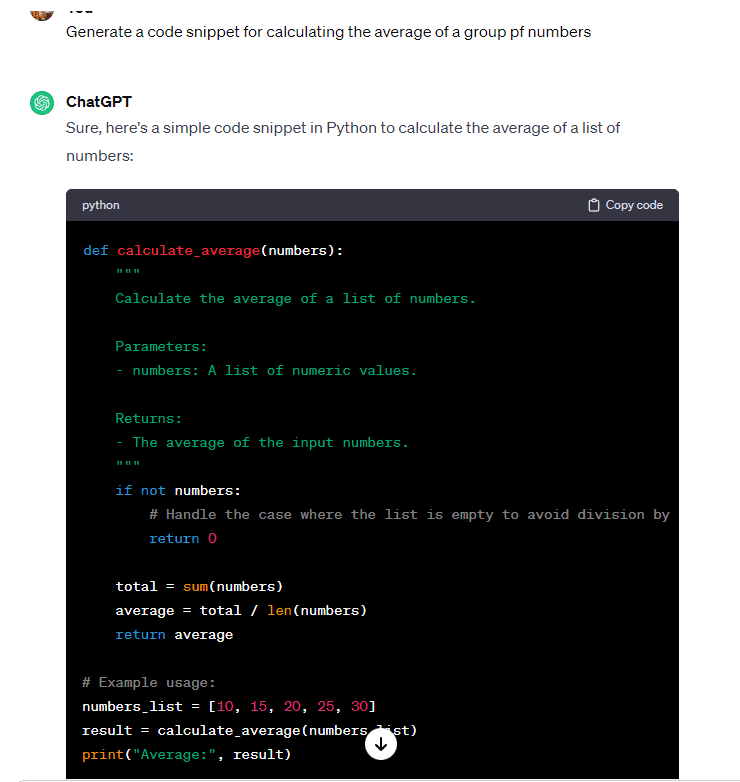
Natural Language Queries
ChatGPT can be used to process natural language queries for data analysis. You may ask it to summarize a dataset or filter data based on criteria.
Interpretation of Results
One critical use case of ChatGPT is result interpretation. Asking ChatGPT to perform statistical analysis or converting insights into patterns will save you time and effort.
Exploratory Data Analysis (EDA)
Using ChatGPT for exploratory data analysis means getting assistance for understanding data and formulating hypotheses. It can provide you with guidance on data transformations and crucial variables to examine.
Sentiment Analysis
You can ask ChatGPT to analyze your customers’ sentiments from a dataset. For example, you can provide user feedback, and it will tell you whether the feedback is positive, negative, or neutral.
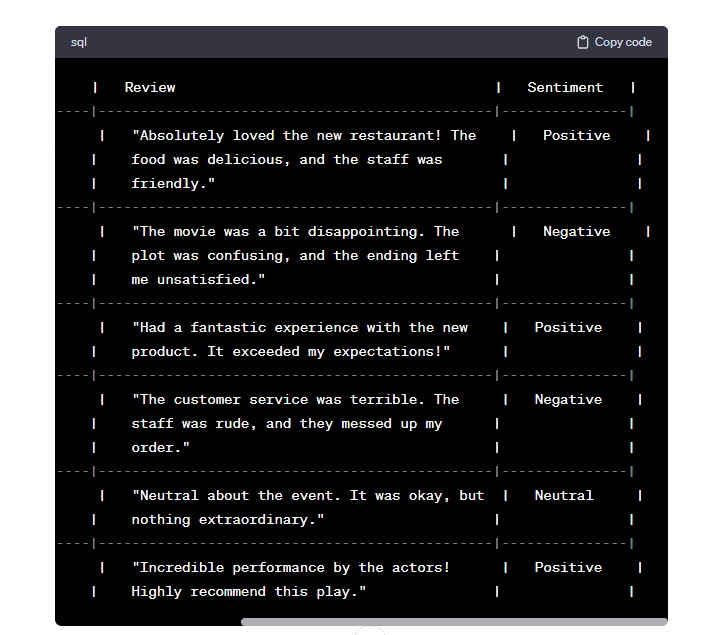
If you are planning to integrate ChatGPT in data analysis, it is wise to be aware of the challenges that may come your way and methods to overcome them.
Reliability
ChatGPT does not guarantee you to provide 100% accurate data. It is the biggest challenge of implementing this language model into the data analysis process. To avoid this, you need to verify the accuracy of information provided by ChatGPT through cross-referencing responses with known data or a feedback loop for users.
Understanding Context
If you provide complex or highly specialized contexts to ChatGPT for data analysis, it may struggle to understand. So, while interacting with ChatGPT, you must provide as much context as possible, that too in simpler, more explicit language.
Managing Ambiguity
ChatGPT may need to process ambiguous queries or complex requirements during data analysis. Users can get rid of this problem by becoming more specific in their queries or adding more details.
Data Privacy and Security
If you want ChatGPT to analyze data, it might include sharing sensitive and private raw data with this model. To overcome this, you must use data anonymization techniques to mask the sensitive data.
Understandably, Artificial Intelligence (AI) is able to enhance data analytics efficiency by automating complex tasks and extracting valuable insights from large volumes of datasets. As this technology continues to evolve, ChatGPT can have a groundbreaking impact on data analytics.
The NLP of this model can generate code snippets, interact with data, and provide contextual insights. In the future, ChatGPT is expected to possess domain-specific knowledge that will enable it to perform more nuanced interactions with the data of various industries.
For data analytics, it will be able to offer bespoke solutions for specific analytical tasks. Users might use it collaboratively with data analytics platforms fostering a more dynamic approach to problem-solving. One thing is for sure ChatGPT will play its role in democratizing data analytics and making it accessible to a broader range of users.
Vijay Singh Khatri Graduate in Computer Science, specializing in Programming and Marketing. I am very fond of writing tech articles and creating new products.


